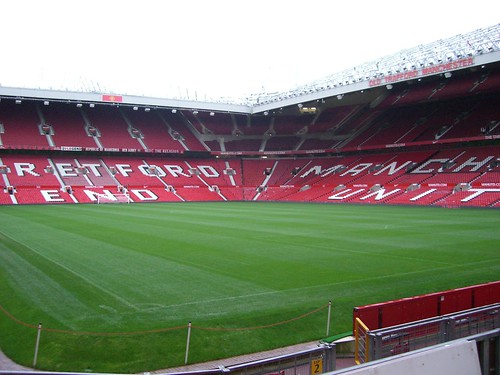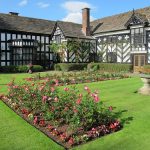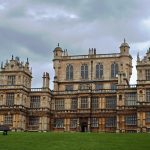Old Trafford
One of the things that Manchester is most famous for is football, and that’s no surprise given that they have two of the most successful football teams in England calling the city their home. The first of these teams to form in 1878 formed under the name Newton Heath L&YR. The club joined the English First Division, then the highest tier of competition in the country in 1892. Ten years later, Newton Heath L&YR gave way to the name we know them as today – Manchester United. In 1908, the club won their first league title and two years later the club moved into one of the most iconic football stadiums in the world – Old Trafford.

A Club Fit for the Stadium
Over the span of the 20th century, the club have had a mixed bag of success, particularly during the late 1940s and 1950s until in 1958, a plane crash resulted in the death of eight first team players. It took the club 10 years to rebuild the team in earnest, winning the 1968 European Cup, the first English Club to do so. The real success of the club came in 1986 when Manchester United took on Sir Alex Ferguson as their manager. Since his appointment and until his retirement in 2013, the team won 13 league titles. Alongside these League titles won, they also boast 3 European Champions, 12 FA Cups and 4 League Cup wins in their history, making them one of the most successful English football clubs of all time.
The Theatre of Dreams
It’s fitting then that such an iconic team with fans all over the world should have a home stadium that is just as iconic as they are. Old Trafford, also known to fans and rivals alike as the Theatre of Dreams, nicknamed by Bobby Charlton, one of the clubs most successful players, boasts a current capacity of around 80 000 spectators. When construction began in the very early 20th century, the original plans as designed by Scottish architect Archibald Leitch were designed with a capacity of 100,000 spectators. Due to cost restraints and overspending during construction, the capacity was reduced to 80,000, which was still an enormous number for the time. The construction of Old Trafford was completed in 1909 and on the 19 February 1910, the first game was played at the stadium – with Liverpool beating the hosts on their brand-new turf 4 goals to 3.
A Stadium with Prestige
The stadium has hosted many football matches as well as some rugby games for the 2012 Summer Olympics. Old Trafford’s record attendance was in 1939 for the FA Cup Semi-Final between Wolverhampton Wanderers and Grimsby Town which saw a crowd of 76,962 people. During the second world war, the stadium even served a role as a depot for the British Military during which time football games continued to be played there.
A visit to Old Trafford, whether you’re a fan of Manchester United or a rival club, is a rite of passage for any football fan when they find themselves in the city. Many nights of success and the coming true of dreams for Manchester United and the players have been witnessed by this great stadium.



